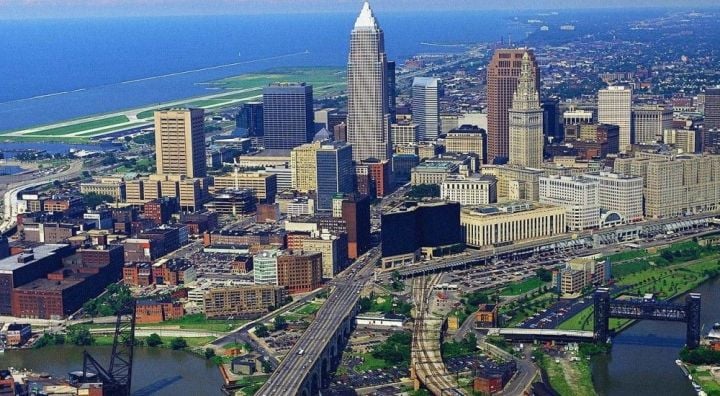
In the vast tapestry of American cities, safety and security are paramount concerns for residents and visitors alike. While the United States boasts countless vibrant and peaceful communities, it also faces challenges in certain urban areas where crime rates can be significantly higher. In this article, we will delve into the most dangerous cities in America, examining the factors contributing to their higher crime rates, the efforts being made to address these issues, and the importance of staying informed about safety when residing, traveling in these areas or moving to it.
Note: It’s essential to approach discussions about crime and safety with sensitivity, recognizing that many factors contribute to crime rates, including socioeconomic disparities, systemic issues, and community dynamics. This article aims to provide an informative overview rather than perpetuate stereotypes or stigmatize communities.
Understanding Crime Rates
Crime rates in cities can be influenced by a multitude of factors, and it’s crucial to consider the complexities involved in assessing a city’s safety. Several key factors that contribute to higher crime rates in certain areas include:
- Economic Disparities: Communities with high poverty rates often experience elevated crime rates. Economic hardship can lead to desperation, increasing the likelihood of property crimes and, in some cases, violent crimes.
- Educational Attainment: Areas with lower levels of educational attainment tend to have higher crime rates. Access to quality education can play a crucial role in breaking cycles of crime and poverty.
- Drug and Gang Activity: Cities with widespread drug abuse and gang presence are more likely to experience violent crimes, including homicides and assaults.
- Police Presence and Funding: The level of police presence, as well as funding for law enforcement agencies, varies widely among cities. Insufficient resources can limit law enforcement’s ability to combat crime effectively.
- Social Services: Access to social services, mental health care, and addiction treatment can impact crime rates. Communities with robust support systems often see lower crime rates.
- Community Engagement: Neighborhoods with active and engaged communities tend to experience lower crime rates. Strong social bonds can deter criminal activity.
- Criminal Justice Policies: Local criminal justice policies, such as bail reform and sentencing guidelines, can influence crime rates.
The Most Dangerous Cities
It’s essential to note that crime rates can fluctuate from year to year, and cities that have experienced high crime rates in the past may see improvements through focused efforts and community initiatives. That said, several cities have consistently ranked among the most dangerous in recent years. These rankings are typically based on reported crime rates, including violent crimes such as homicides, rapes, robberies, and aggravated assaults.
- St. Louis, Missouri: St. Louis has consistently ranked among the most dangerous cities in America. Factors contributing to its high crime rates include economic disparities, drug-related issues, and a significant homicide rate.
- Memphis, Tennessee: Memphis faces challenges related to poverty and gang activity, which contribute to its higher crime rates. Homicides and property crimes are of particular concern in this city.
- Baltimore, Maryland: Economic disparities, drug issues, and gang activity have led to ongoing challenges with violent crime in Baltimore. Efforts to address these issues include community policing and outreach programs.
- Detroit, Michigan: Detroit has faced economic hardships for years, which have contributed to elevated crime rates. While the city has seen improvements in recent years, violent crime remains a concern.
- Albuquerque, New Mexico: Albuquerque’s high crime rates are influenced by drug problems, gang activity, and property crime. The city has launched initiatives aimed at community policing and crime prevention.
- Oakland, California: Economic disparities and gang activity have contributed to Oakland’s reputation for crime. The city has been working on strategies to reduce violence and improve community safety.
- Little Rock, Arkansas: Little Rock faces challenges related to violent crime, particularly homicides and aggravated assaults. Community-based programs and increased police presence are part of ongoing efforts to address these issues.
- Kansas City, Missouri: Kansas City has grappled with rising homicide rates in recent years, linked to factors such as drug-related violence and access to firearms. Local initiatives aim to curb this trend.
- Baton Rouge, Louisiana: Baton Rouge faces high rates of violent crime, including homicides and robberies. Socioeconomic disparities and drug issues are contributing factors.
- Cleveland, Ohio: Cleveland’s challenges with violent crime have been influenced by economic disparities and gang activity. Community engagement and law enforcement initiatives seek to improve safety.
Efforts to Improve Safety
Despite the challenges faced by the most dangerous cities, many communities are actively working to address crime and improve safety for residents and visitors. Some common strategies include:
- Community Policing: Many cities have embraced community policing models that prioritize building positive relationships between law enforcement officers and the communities they serve.
- Violence Intervention Programs: Various cities have implemented violence intervention programs that focus on mediating conflicts and providing support and resources to individuals at risk of becoming involved in violence.
- Youth Outreach: Initiatives targeting at-risk youth aim to provide alternatives to criminal activities, such as after-school programs, mentorship, and job training.
- Economic Development: Efforts to reduce poverty and promote economic development can have a positive impact on crime rates by addressing root causes.
- Mental Health and Addiction Services: Expanding access to mental health services and addiction treatment can help individuals address underlying issues that contribute to criminal behavior.
- Gun Control and Safety Measures: Implementing stricter gun control measures and promoting responsible firearm ownership can help reduce gun-related violence.
- Criminal Justice Reform: Some cities are reevaluating their criminal justice policies, including bail reform and sentencing guidelines, to reduce recidivism and address systemic issues.
Importance of Staying Informed
Whether you’re a resident or a visitor, staying informed about the safety of a city is crucial. While crime rates are just one aspect of safety, they can provide valuable insights into a community’s challenges and strengths. Travelers should research destinations and take precautions when visiting cities with higher crime rates, such as avoiding high-crime areas, using reliable transportation, and securing valuables.
For residents, being informed about crime rates can help individuals and communities take proactive measures to enhance safety. This may involve engaging in community organizations, supporting local initiatives, and advocating for policies that address the underlying causes of crime.
Conclusion
Crime rates in American cities are influenced by a complex interplay of socioeconomic, cultural, and systemic factors. While some cities face ongoing challenges with high crime rates, many communities are actively working to improve safety and address the root causes of criminal behavior. Staying informed about crime rates and understanding the efforts being made to enhance safety are essential steps for both residents and visitors to contribute to the well-being of these communities and the country as a whole.
We hope you found this blog post on The Most Dangerous Cities in America: An In-Depth Analysis, useful. Be sure to check out our post on Moving Safety Tips Everyone Should Know for more great tips!
Have Experience in the Moving Industry? Want an Additional Income Stream? Work With All Around Moving!
Do you possess experience in the shipping industry, or moving, and looking for additional Income stream opportunity? Come see what All Around Moving has to offer to you!
The Work With Us program of Around Moving, affords experienced moving consultants with the special opportunity to develop their own moving consultant business from anywhere in the U.S.A.
We will provide you with a complete set-up to run your business. To learn more, click here.





